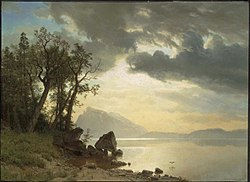Icon of Days Gone By
- Cheryl Anne Stapp

- Sep 22, 2021
- 3 min read

Thanks to abundant product and clever ad campaigns from the 1890s forward, Death Valley, California, is arguably the world’s most famous producer of the mineral sodium borate, familiarly known as borax.
This very versatile, natural substance has been known for centuries. In ancient times the Egyptians used borax in the mummification process, the Chinese used it in pottery glazes, and Venetian and Roman goldsmiths used it as an ideal welding “flux.” However, supplies of the marvelous material were scarce in the ancient past, when the only known sources were Tibet, and some hot springs in Tuscany. Hundreds of years later, in the 1820s, Italy became the world’s principal supplier of borax.
Borax was first produced in the United States at Clear Lake, north of San Francisco, beginning about 1864. The industry flourished there until the mineral was found in larger and purer quantities in eastern California and western Nevada during the 1870s.
Then in 1881, hardscrabble gold prospector Aaron Winters discovered borax at his Death Valley mining camp near Furnace Creek. After filing a claim, Winters sold his holdings for $20,000 (a small fortune in 1881) to William T. Coleman, an entrepreneur who was well remembered as the leader of San Francisco’s Committee of Vigilance back in the chaotic 1850s. Coleman now owned a promising property that came with two major obstacles: the site was located a great distance from reliable transportation, in one of the hottest spots on earth. In early 1883 Colman organized two companies, the Harmony Borax Works at Furnace Creek and Amargosa Borax Works on the edge of the valley at Shoshone, installed costly equipment, and hired crews to mine and process the raw crystals.
And, he began to transport borax to the nearest railhead, a grueling 165 miles across a man-killing desert, in massive, mule-powered wagons.
Each wagon, made of oak, cost $900 to build, and there were ten of them. Each measured 16 feet by 4 feet by 6 feet deep, and weighed 7,800 pounds empty. The wagon wheels rose 7 feet tall in the rear, and 5 feet tall in the front. Besides a full load of ore, each carried a 1,200-gallon, iron water tank for the 20-day round trip from the mines to the railhead at Mohave, California. In the beginning the wagons were hauled by fourteen animals: twelve mules plus two draft horses as “wheelers.” It was at the Amargosa works, where summers were slightly cooler, that teamster Ed Stiles first hooked an additional six mules at the head of the standard twelve-mule string and attached an extra wagon, thus creating the soon to be famous “20 mule” team, which always included two horses in the count.
Three men operated the loaded, 36-ton rig: the driver; the teamster, who harnessed and unharnessed the mules, rode one of the draft horses, and handled the lead wagon’s brake; and the swamper, who rode on the rear wagon, operated its brake, and doubled as cook and dishwasher. One team left the works every four days, from 1883 to 1889.
However, Coleman wasn’t the only producer. Others were in the borax mining business, and new competitors entered the trade, eventually forcing prices down until Coleman’s company and several others went bankrupt. In 1890 Francis Marion Smith acquired Coleman’s holdings, and consolidated them with his own in western Nevada and elsewhere to form the Pacific Coast Borax Company. A year later Smith established the brand name 20 Mule Team Borax to promote sales, adding a sketch of the mule team on all packaging as the company’s trademark.
The product became a household name as a laundry detergent booster when the Pacific Coast Borax Company sponsored Death Valley Days, a radio program that broadcast from 1930 to 1945; and later a television series that aired from 1952 to 1975.
The long mule strings pulling huge wagons only traversed the formidable desert for six years, but their iconic image endures as a symbol of Death Valley’s lore, and its mystique of yesteryear. In modern times, varied new uses for the white crystals have been discovered and applied. Borates are used in fertilizers, fiber optics, cosmetics, insecticides, insulation fiberglass, semiconductors, and various home health remedies. Today, most of the world supply of borax comes from a gigantic pit mine in California’s Mohave Desert, in a place fittingly named Boron.




Comments